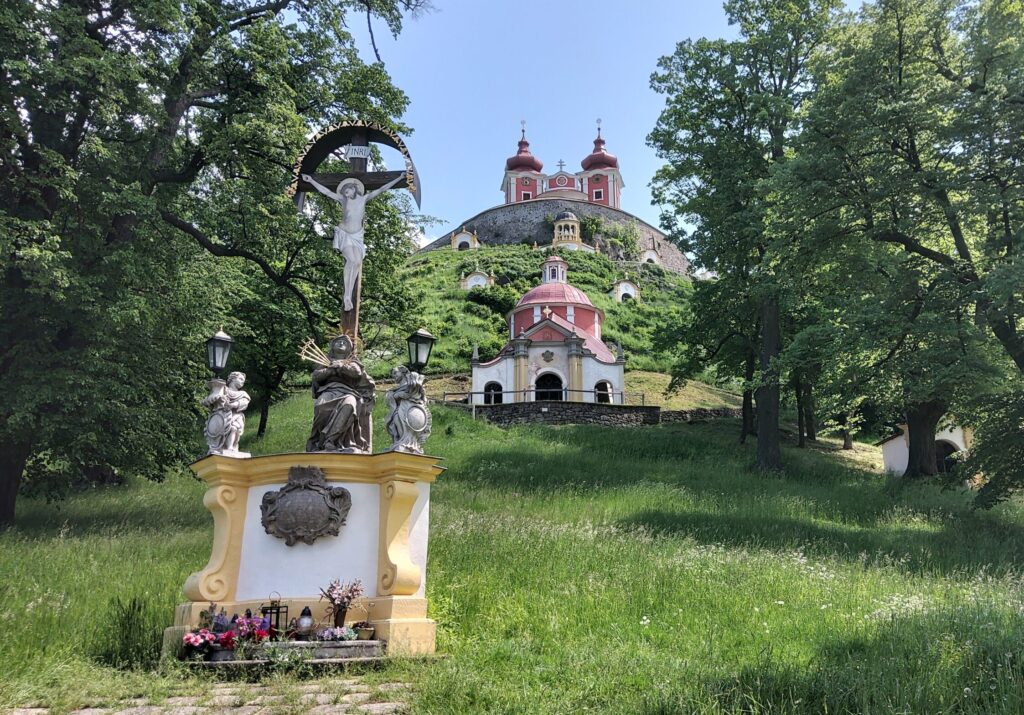
Calvary
Our schedule was to cycle to Nitra today and tomorrow to Sala for the train to Bratislava but there was so much more to see here. I found that we could catch the train by cycling 20 km west to Zarnovica so we sacrificed tonight’s booking and booked another night here. We had to upgrade to an apartment as our room was already booked, it’s lavish but we didn’t get full value from it, there’s too much to see to spend time hanging around there. instead of a full day cycling in the heat, we walked up to the Calvary complex.
The initiator was Pope Franz Perger (1700 – 1771) from the local Jesuit community. He built it thanks to the gifts of rich miners, dignitaries and mining families. Construction began in 1745 and was completed in 1751. The Calvary 17 stops and three churches (Lower Church, Sacred Stairs and Upper Church). Wooden reliefs in chapels represent, with typical Baroque theatricality, the key moments of Jesus’ life until his torture and resurrection.
We were the only customers at the cafe by the base where we lunched and kafolered. The young waitress was very chatty and excited about her forthcoming summer job in Spain. She’d taught herself English and spoke it well, and looking forward to learning Spanish. She said the city has been getting busier every year in the five years since the Calvary’s restoration, it having been allowed to decay during the communist era. She said it’s overrun by tourists in the summer and that we’re visiting at the best time.
Next we made the long walk to the mining museum but only toured the surface buildings. Silver mining was the source of the city’s wealth. We looked round the central area again in the evening and again ate at the convenient bistro.